Mzimba is home to various birds, ranging from small, colorful songbirds to majestic raptors. The diverse habitat of Mzimba provides a haven for many species of birds, some of which are endangered or threatened.
Bird watching in Mzimba is a popular activity that attracts birders from all around the world. From the weaver birds’ intricate beauty to the Fish Eagles’ sharp cries, Mzimba is a paradise for bird enthusiasts.
With its expansive wetlands, lush forests, and rolling hills, birders in Mzimba can observe some of the world’s most incredible species of birds.
20 Birds to Watch in Mzimba
If you are a bird lover, you might visit Mzimba, a northern Malawi district rich in biodiversity and natural beauty. Mzimba is home to various birds, ranging from small, colorful songbirds to majestic raptors.
The diverse habitat of Mzimba provides a haven for many species of birds, some of which are endangered or threatened.
Here are 20 birds that you can watch in Mzimba.
1. Black-winged Stilt
The black-winged stilt is a wading bird of the avocet and stilt family, found in many regions around the globe. It is a tall bird with extremely long legs, an adaptation that helps it wade for food in shallow waters.
Its scientific name is Himantopus himantopus, sometimes called a single, almost cosmopolitan species. This means that it can be found in most places, although the species may have slight variations.
The bird is a migratory species from southern Europe through Africa, Australia, and New Zealand.
It is mainly found in shallow wetlands, which provide the ideal habitat for insect larvae, crustaceans, mollusks, and small fish that make up its diet.
The black-winged stilt is an unmistakable bird, and its striking black and white plumage is an effective camouflage when it hunts among the reeds and shallow waters of its wetland habitats.
| Kingdom | Animalia |
| Phylum | Chordata |
| Class | Aves |
| Order | Charadriiformes |
| Family | Recurvirostridae |
| Genus | Himantopus |
| Species | H. himantopus |
2. Yellow-billed Duck
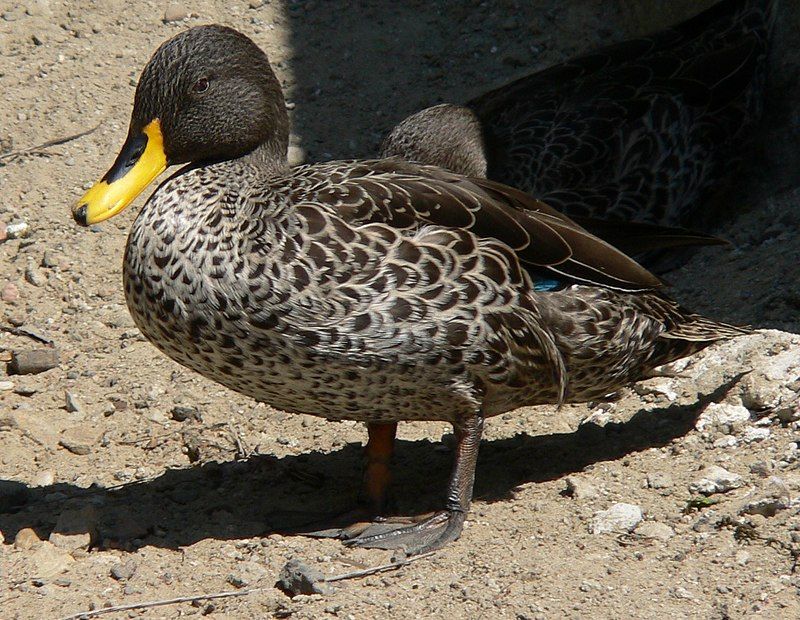
The yellow-billed duck is a medium-sized dabbling duck native to southern and eastern Africa. It is characterized by its bright yellow bill, which is why it is named as such.
This duck is typically around 51–58 cm long and is a very abundant resident breeder in these regions, meaning it spends most of its life there.
It does not migrate; instead, it wanders during the dry season to find suitable bodies of water for it to live in. Outside the breeding season, the yellow-billed duck is incredibly social and forms large flocks with other ducks.
This is a unique feature for a duck that is not migratory and shows that the yellow-billed duck is a remarkable species. Its social nature is one of the main reasons it is so successful in its native habitat.
| Kingdom | Animalia |
| Phylum | Chordata |
| Class | Aves |
| Order | Anseriformes |
| Family | Anatidae |
| Genus | Anas |
| Species | A. undulata |
3. Great Cormorant
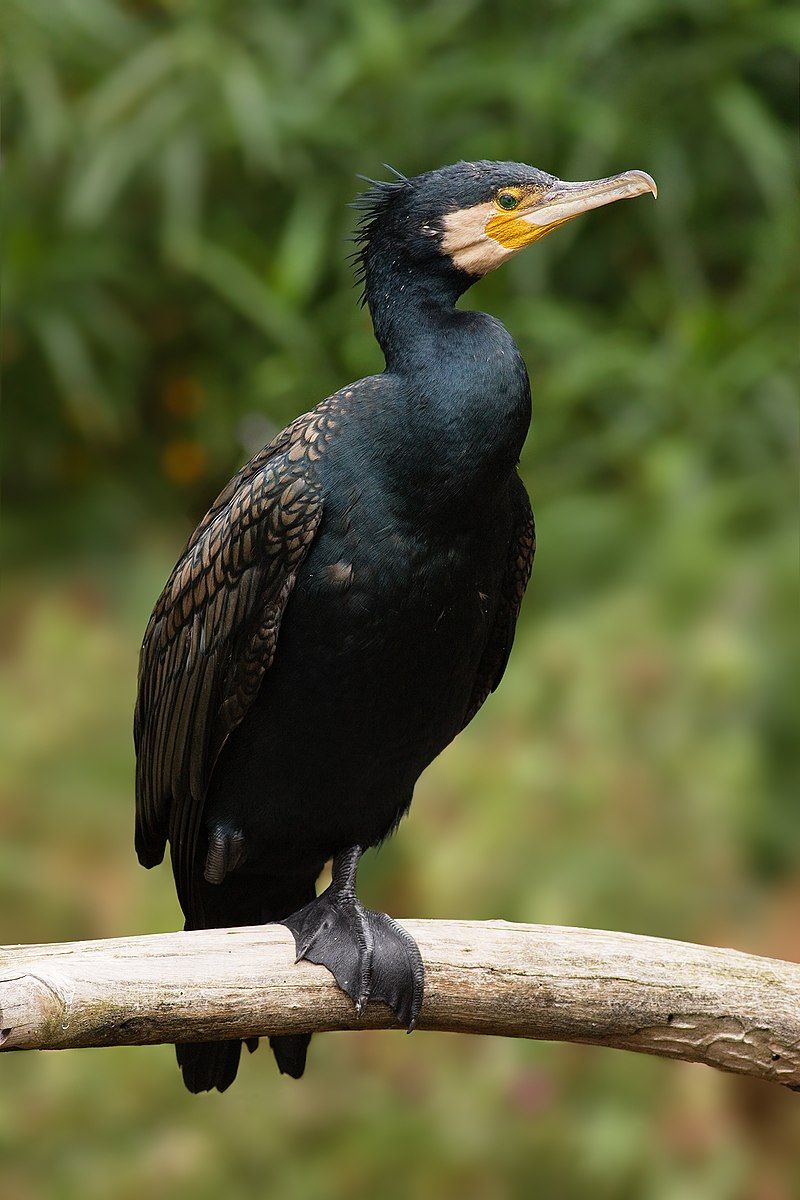
The great cormorant is a widely distributed seabird known by many names.
In New Zealand, it is often referred to as the black shag or kawau, while it is called the great black cormorant in the Northern Hemisphere, the black cormorant in Australia, and the large cormorant in India.
It belongs to the cormorant family of seabirds, characterized by their black feathers, long necks, and webbed feet that make them excellent swimmers.
The great cormorant is a large bird with a wingspan of up to five feet, and they are found in coastal areas around the world. They feed mainly on fish and are known to be quite skilled swimmers and divers. They are also social birds and often hunt in large groups.
Their populations are generally stable, though their numbers in some areas may decline due to human activities such as fishing and pollution.
| Kingdom | Animalia |
| Phylum | Chordata |
| Class | Aves |
| Order | Suliformes |
| Family | Phalacrocoracidae |
| Genus | Phalacrocorax |
| Species | P. carbo |
4. Lesser Jacana
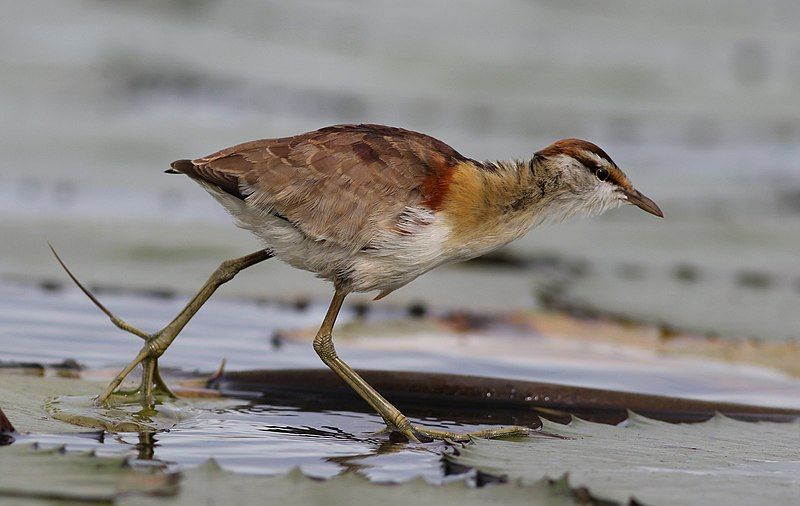
The lesser jacana is a species of bird that belongs to the family Jacanidae. This family consists of waders found in tropical and subtropical regions. The lesser jacana is monotypic, meaning it is the only species in its genus, Microparra.
This species is known for its large feet, which it uses to walk on aquatic plants. It has a long, slender bill used for probing food in the mud. The plumage of the lesser jacana is brown to black, with a white stripe running along the back and wings.
The underside is white. The lesser jacana is found in wetland areas like ponds, marshes, and swamps. Its diet includes insects, crustaceans, worms, and other small aquatic animals.
The lesser jacana is an essential species in its environment, as its presence helps to maintain a healthy balance of species diversity.
| Kingdom | Animalia |
| Phylum | Chordata |
| Class | Aves |
| Order | Charadriiformes |
| Family | Jacanidae |
| Genus | Microparra |
| Species | M. capensis |
5. Crested Francolin
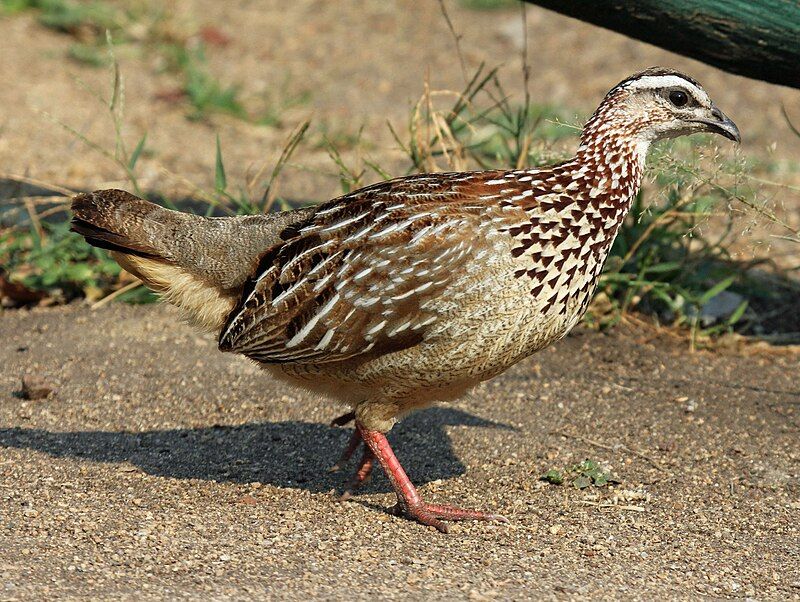
The crested francolin is a species of bird in the family Phasianidae found in southern Africa. It is a medium-sized bird, typically measuring about 40 cm in length. It has reddish-brown and white streaks on its body and a white-tipped crest on its forehead.
Its diet consists mainly of seeds and insects. One of the crested francolin subspecies, Ortygornis sephaena ovum, is sometimes considered a separate species, Kirk’s francolin. It is slightly smaller than the crested francolin and has a reddish coloration.
It is found in Tanzania and Mozambique, and it is believed to be closely related to the crested francolin. It is less common than the crested francolin and is listed as a near-threatened species by the IUCN.
| Kingdom | Animalia |
| Phylum | Chordata |
| Class | Aves |
| Order | Galliformes |
| Family | Phasianidae |
| Genus | Ortygornis |
| Species | O. sephaena |
6. Greater Flamingo
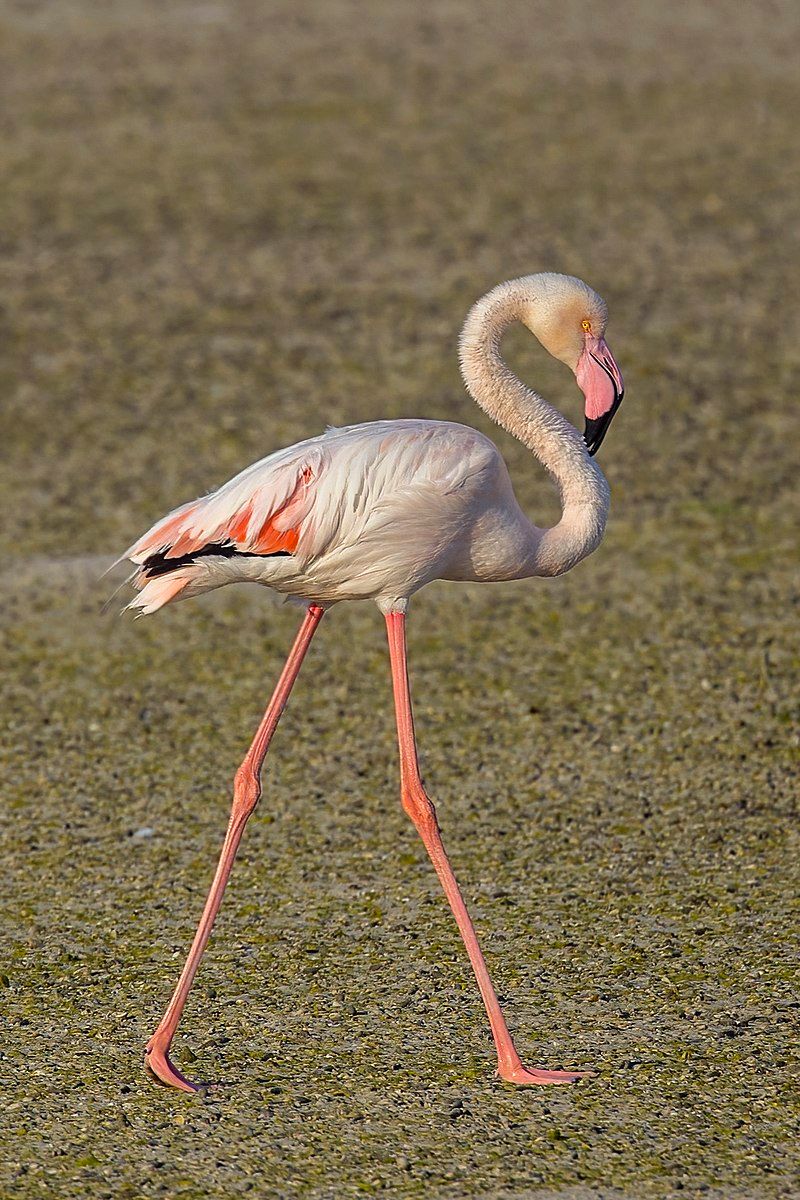
The greater flamingo is the most widespread and significant species of the family.
Found all over the world, they are particularly numerous in the Old World, with their habitat covering Northern and Sub-Saharan Africa, the Indian Subcontinent, the Middle East, the Levant, the Persian Gulf, the Gulf of Aden, the Red Sea, and the Mediterranean countries of Southern Europe.
These majestic birds are easily recognizable by their size, average height of around four feet, and distinctive pink plumage. Their long legs make them well-suited to wading through shallow waters, where they can forage for food.
They feed primarily on brine shrimp and plankton and have a unique filter-feeding mechanism that allows them to strain tiny organisms from the water.
Flamingos also supplement their diet with insects, mollusks, and small fish. The greater flamingo is a social bird often seen in large flocks.
Their flocks can range from a few dozen to thousands of individuals, and they’re known to communicate with one another through a series of honks, grunts, and clicks.
After mating, they form strong pair bonds and even remain close to their family group. The greater flamingo is an impressive bird, and its wide range has made it an iconic species worldwide.
Its distinct size and coloring make it easy to spot in its habitat, and its social behavior is a source of fascination for bird lovers. With its impressive range and unique characteristics, the greater flamingo is a bird species that will remain admired for years.
| Kingdom | Animalia |
| Phylum | Chordata |
| Class | Aves |
| Order | Phoenicopteriformes |
| Family | Phoenicopteridae |
| Genus | Phoenicopterus |
| Species | P. roseus |
7. Southern Ground Hornbill
The southern ground hornbill is a bird that belongs to the hornbill order. It is one of only two species of ground hornbill found in Africa and is the largest species of hornbill in the world.
This bird is endemic to the southern regions of Africa, stretching from Kenya to South Africa. It is a large, striking bird with black feathers, a white belly, and a bright red bill.
The bird often forms large flocks, which can be seen foraging on the ground or perched in trees. They have a wide range of vocalizations, including deep hooting sounds, and sometimes even mimic the calls of other birds.
The southern ground hornbill is an omnivorous species, feeding on insects, small vertebrates, fruits, and seeds. To protect themselves from predators, they roost in large trees and watch for danger.
They are essential to the African ecosystem, helping keep insect and small vertebrate populations balanced.
| Kingdom | Animalia |
| Phylum | Chordata |
| Class | Aves |
| Order | Bucerotiformes |
| Family | Bucorvidae |
| Genus | Bucorvus |
| Species | B. leadbeateri |
8. Pennant-winged Nightjar
The pennant-winged nightjar is a species found in Africa, occurring from Nigeria to northern South Africa. These birds are intra-African migrants, meaning they migrate within Africa rather than outside the continent.
During the breeding season, the pennant-winged nightjar exhibits remarkable sexual dimorphism, meaning that males and females display different physical characteristics.
Male birds have deep rufous-brown upperparts with a white throat and breast, while females have a more grey-brown head and upperparts with a greyish-white throat and breast and barring on the wings.
This dimorphism is thought to result from the birds’ adaptation to their environment, allowing them to camouflage better and remain undetected by predators.
| Kingdom | Animalia |
| Phylum | Chordata |
| Class | Aves |
| Clade | Strisores |
| Order | Caprimulgiformes |
| Family | Caprimulgidae |
| Genus | Caprimulgus |
| Species | C. vexillarius |
9. Egyptian Goose
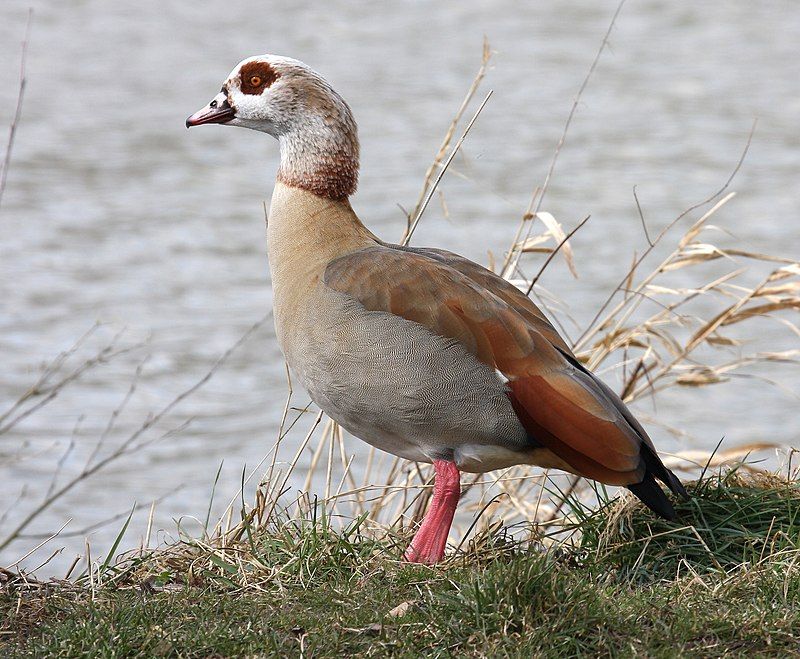
The Egyptian Goose is a species of duck found across Africa, typically found in extensive wetlands, rivers, and lakes. It belongs to Anatidae, which includes all ducks, geese, and swans. The Egyptian Goose is a famous ornamental bird, often kept in parks and gardens.
As a result, it has been introduced to parts of Europe, the United States, and other areas outside its natural range. This has allowed the species to thrive in its introduced range, making it a common sight in many cities and towns.
The Egyptian Goose is known for its striking plumage, which includes a grey-brown body with white patches on the wings, chest, and belly. It is also known for its loud, honking call, often heard early morning and evening.
| Kingdom | Animalia |
| Phylum | Chordata |
| Class | Aves |
| Order | Anseriformes |
| Family | Anatidae |
| Genus | Alopochen |
| Species | A. aegyptiaca |
10. Red-chested Cuckoo
The red-chested cuckoo is a species of bird from the Cuculidae family, commonly found in Africa south of the Sahara. This cuckoo species is medium-sized, with distinctive red coloring on its chest.
In Afrikaans, a dialect spoken in some parts of Africa, the bird is known as the “Piet-my-vrou,” derived from the sound of its call. The red-chested cuckoo is an interesting bird, as it is both visually striking and culturally significant for the Afrikaans language.
| Kingdom | Animalia |
| Phylum | Chordata |
| Class | Aves |
| Order | Cuculiformes |
| Family | Cuculidae |
| Genus | Cuculus |
| Species | C. solitarius |
11. Denham’s Bustard
Denham’s bustard, also known as Stanley bustard or Stanley’s bustard, is a species of large bird that belongs to the bustard family.
It is found in many parts of Sub-Saharan Africa and is known to inhabit open ground such as agricultural land, grassland, floodplains, and burnt fynbos.
It is a resident species in these areas, but some inland populations may migrate to lower altitudes during winter. The bird is a solitary species typically found in pairs or small groups, although it is sometimes seen in larger flocks.
Its diet consists of seeds, insects, and small vertebrates. The bird is threatened by habitat loss and hunting, and its conservation status is currently listed as near threatened.
| Kingdom | Animalia |
| Phylum | Chordata |
| Class | Aves |
| Order | Otidiformes |
| Family | Otididae |
| Genus | Neotis |
| Species | N. denhami |
12. Grey-headed Gull
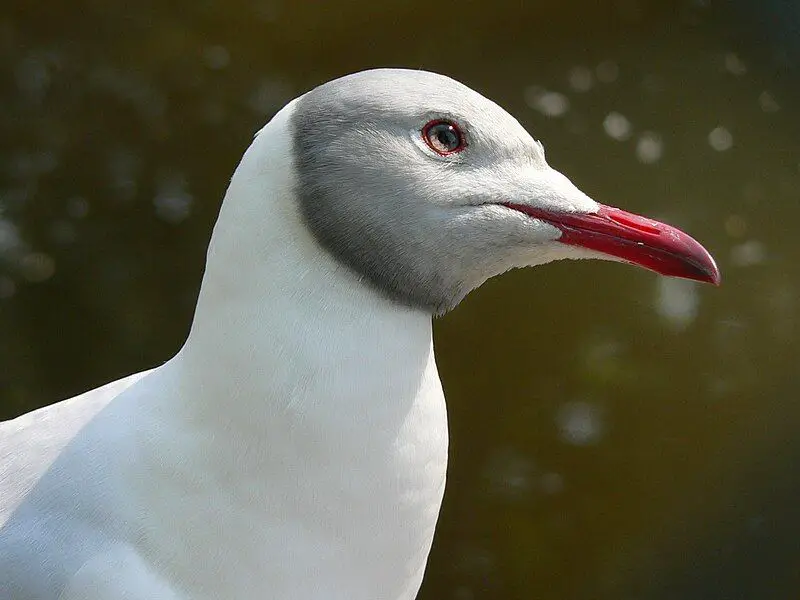
The grey-headed gull is found in South America and Africa south of the Sahara. It is not a migratory species but can be found in more locations during winter. The grey-headed gull has also been seen as a rare vagrant in North America, Italy, and Spain.
This means that it has been spotted on rare occasions in these places. The grey-headed gull is a small species of gull. It has a grey head and is also known as the gray-hooded gull. Its breeding grounds are scattered throughout South America and Africa.
It is not a migratory species, but it may be more widely spread during winter. Grey-headed gulls have been seen as a rare vagrant in North America, Italy, and Spain.
These sightings were believed to be of birds that had strayed from their original breeding grounds.
However, These sightings are rare, and the birds likely have not established a breeding population in these countries. The grey-headed gull is an important species to the ecosystem in its native habitat.
It helps to control the insect population, and its presence is a vital part of the food chain. It is essential to ensure this species is protected and its breeding grounds remain intact.
| Kingdom | Animalia |
| Phylum | Chordata |
| Class | Aves |
| Order | Charadriiformes |
| Family | Laridae |
| Genus | Chroicocephalus |
| Species | C. cirrocephalus |
13. Bateleur
The bateleur is a medium-sized eagle belonging to the family Accipitridae, which includes many other species of raptors, such as hawks, kites, and harriers. It is commonly thought to be related to the snake eagles and is the only species in the genus Terathopius.
It is also believed to be the source of the iconic “Zimbabwe Bird,” which serves as Zimbabwe’s national emblem. The bateleur is a striking bird with a black beak, reddish-brown feathers, and a distinctive white patch on its underwing.
Its wingspan ranges from 1.2 to 1.5 meters, typically inhabiting open habitats such as grasslands and savannas.
It feeds mainly on small mammals and reptiles and is a skilled hunter with excellent eyesight. The bateleur is an essential species in its range, as it plays a crucial role in controlling the populations of small mammals and reptiles.
It is also an important symbol in Zimbabwe, representing strength and determination. The iconic Zimbabwe Bird has been used in Zimbabwean currency since 1980 and is a famous symbol throughout the country.
The International Union for Conservation of Nature (IUCN) lists the bateleur as a species of Least Concern. However, its population is believed to be declining due to habitat destruction and other human activities.
As such, conservation efforts are needed to ensure the species’ continued survival.
| Kingdom | Animalia |
| Phylum | Chordata |
| Class | Aves |
| Order | Accipitriformes |
| Family | Accipitridae |
| Genus | Terathopius |
| Species | T. ecaudatus |
14. Hornbill
Hornbills are birds found in tropical and subtropical regions of Africa, Asia, and Melanesia. These birds are easily identifiable by their long, down-curved bills.
The bill is often brightly colored and has a casque, a bony structure found on the upper mandible. Hornbills have been an essential part of different cultures in many parts of the world and are even featured in some myths and legends.
They are omnivorous birds, meaning they eat both plants and animals, and they are also able to fly long distances.
Hornbills are essential to the ecosystems in which they live, as they help disperse various plants’ seeds and eat insects, which helps control insect populations. The bright colors of the bill can also be used for communication among the bird species.
Hornbills are a unique and fascinating bird species, and they will continue to captivate us for many years to come.
| Kingdom | Animalia |
| Phylum | Chordata |
| Class | Aves |
| Order | Bucerotiformes |
| Family | Bucerotidae |
15. Cormorants
Phalacrocoracidae is a family of aquatic birds that includes around 40 species, commonly known as cormorants and shags. Over the years, different classifications of the family have been proposed by ornithologists.
However, in 2021, the International Ornithologists’ Union (IOU) reached a consensus on a new family taxonomy of seven genera.
This taxonomy is now widely accepted by ornithologists around the world. Cormorants and shags are known for their varied appearances, from the sleek and slender Great Cormorant to the stocky Double-crested Cormorant.
They are also known for their fishing skills, as they can dive deep underwater for food.
Cormorants and shags are found all over the world in both saltwater and freshwater habitats. The new classification of the Phalacrocoracidae family considers several characteristics, such as body size, plumage color, and bill morphology.
This allows ornithologists better to understand the evolutionary relationships between species and genera. It also allows them to make better conservation decisions for the species in the family. The Phalacrocoracidae family is an integral part of the world’s avian biodiversity.
With the new taxonomy, ornithologists can better understand this family and ensure its continued survival.
| Kingdom | Animalia |
| Phylum | Chordata |
| Class | Aves |
| Order | Suliformes |
| Family | Phalacrocoracidae |
16. African Emerald Cuckoo
The African emerald cuckoo is a species of bird found in the avifauna of Africa. It is part of the cuckoo family, a group of birds characterized by their distinct call and unique behavior.
The African emerald cuckoo is mainly found in the moist forests and montane woodlands of equatorial Africa, although it may occasionally be seen in more arid regions. This species has a beautiful green-bluish coloration, which is why it is called the emerald cuckoo.
The African emerald cuckoo is a solitary bird usually seen alone or in pairs. It feeds mainly on insects which it finds among the foliage of trees. The African emerald cuckoo has a melodic call loud enough to be heard from a distance.
This species is not considered to be threatened, and its population is considered stable.
| Kingdom | Animalia |
| Phylum | Chordata |
| Class | Aves |
| Order | Cuculiformes |
| Family | Cuculidae |
| Genus | Chrysococcyx |
| Species | C. cupreus |
17. Barred Long-tailed Cuckoo
The barred, long-tailed cuckoo is a type of bird in the family Cuculidae, a large group of birds that includes cuckoos, roadrunners, and anis.
This species is found in the Albertine Rift montane forests, a unique set of mountainous forests in East Africa. The barred, long-tailed cuckoo can be found disjunctly or sporadically throughout East Africa.
This means it is not found in one continuous area but in scattered locations. The barred, long-tailed cuckoo is an essential species in East African ecosystems and is worth protecting.
| Kingdom | Animalia |
| Phylum | Chordata |
| Class | Aves |
| Order | Cuculiformes |
| Family | Cuculidae |
| Genus | Cercococcyx |
| Species | C. montanus |
18. Fiery-necked Nightjar
The Fiery-necked Nightjar is a unique bird in Africa south of the equator. This bird is part of the Caprimulgidae family, which consists of nightjars. This species is known for its distinct and loud call, often heard in its natural environment.
The call is described as a “good-lord-deliver-us” sound. The Fiery-necked Nightjar features a distinctive red/orange neck and head. This coloration adapts to its environment, helping it blend in with its surroundings.
The bird has a greyish-brown back and wings, with white spots on its wings. Its belly is white with dark streaks. The legs and feet are grey. The Fiery-necked Nightjar is nocturnal, spending most of its time foraging for food at night.
It feeds mainly on insects like moths, grasshoppers, and beetles. The bird can be seen perching on trees or the ground.
It also flies low to the ground in search of food. The Fiery-necked Nightjar is integral to its environment, providing food and shelter to other animals. Its distinctive call is also an essential way of communication between birds.
This species is an integral part of the African ecosystem and is currently listed as Least Concern on the IUCN Red List.
| Kingdom | Animalia |
| Phylum | Chordata |
| Class | Aves |
| Clade | Strisores |
| Order | Caprimulgiformes |
| Family | Caprimulgidae |
| Genus | Caprimulgus |
| Species | C. pectoralis |
19. Great Spotted Cuckoo
The great spotted cuckoo is a species of bird belonging to the Cuculiformes order, which also includes some other species such as roadrunners, anis, and coucals. It is a widespread species in many places throughout Africa and the Mediterranean Basin.
It is notable for its behavior as a brood parasite, meaning it will lay its eggs in the nests of other bird species, especially the Eurasian magpie. This behavior is also seen in some other birds, but the great spotted cuckoo is especially well-known for it.
This adaptation helps the species ensure their young’s survival, as the host birds will unknowingly take care of the cuckoo’s offspring. The great spotted cuckoo is an integral part of the African and Mediterranean ecosystems, playing a vital role in the cycle of life.
| Kingdom | Animalia |
| Phylum | Chordata |
| Class | Aves |
| Order | Cuculiformes |
| Family | Cuculidae |
| Genus | Clamator |
| Species | C. glandarius |
20. Mourning Collared Dove
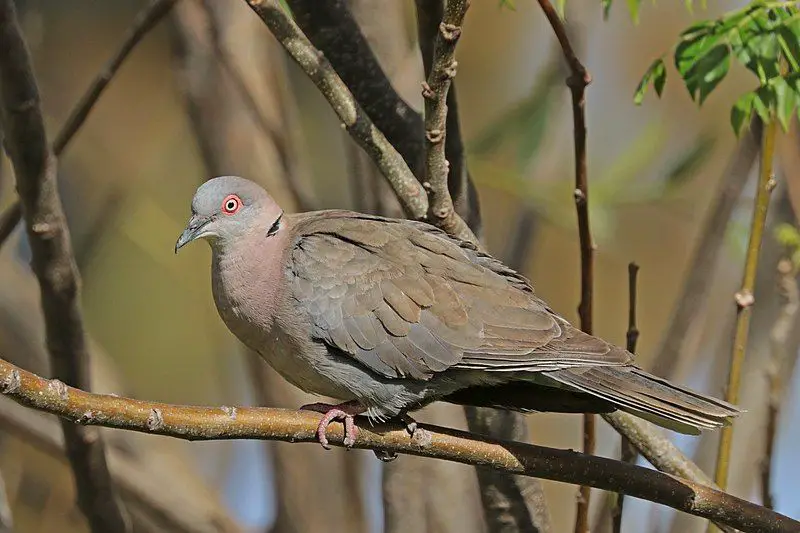
The mourning collared dove, also known as the African mourning dove, is a species found in and around Africa south of the Sahara. Despite the name, it is unrelated to the North American mourning dove.
This species is often seen close to water and is a standard or abundant resident breeding bird in the areas it inhabits.
They have been observed to peacefully coexist with other doves in the same environment, suggesting that they have adapted to living near other species of birds.
The mourning collared dove has many habitats, from woodlands and savannas to grasslands and mangroves, which can be seen in small flocks or pairs. They feed mainly on grains, seeds, and occasional insects.
They are highly adaptable and can survive in various environments, making them a valuable species for conservation.
| Kingdom | Animalia |
| Phylum | Chordata |
| Class | Aves |
| Order | Columbiformes |
| Family | Columbidae |
| Genus | Streptopelia |
| Species | S. decipiens |
Conclusion
Birds in Mzimba are an essential part of the local ecosystem and culture. They provide crucial ecosystem services such as pollination, pest control, seed dispersal, food, and aesthetic beauty to the local people.
As such, the people of Mzimba need to protect birds and their habitats, ensuring they can continue to provide these essential benefits to the community for years to come.